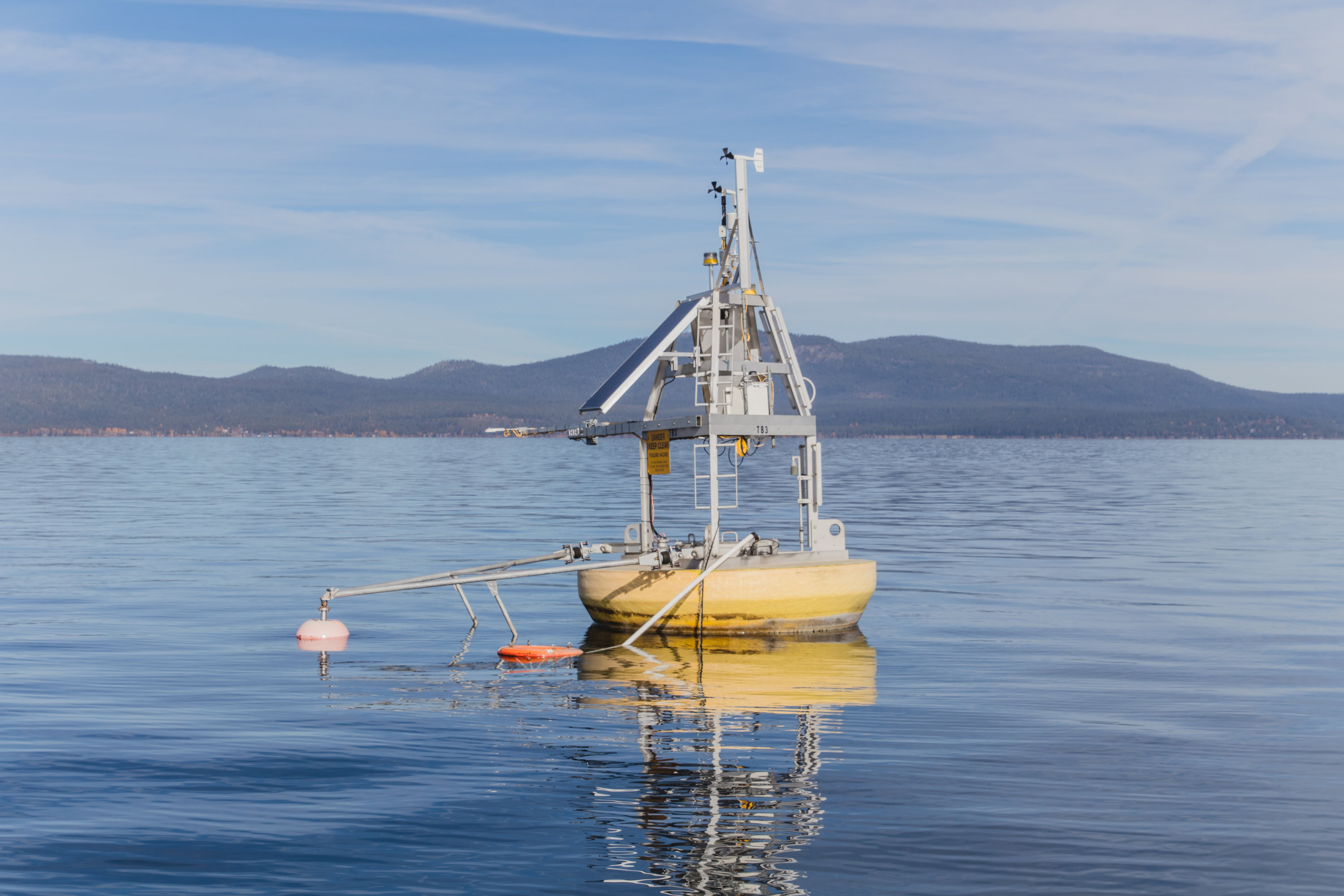
The Science of Lake Tahoe: Long-term monitoring of one of the world’s most famous lakes
By Bonnie Dickson
Lake Tahoe is the largest freshwater lake in Sierra Nevada Mountains and the second deepest body of water in the United States, second only to Crater Lake in Oregon. It’s known for its pristine beauty and unparalleled clarity, having some of the clearest water of any lake worldwide.
The UC Davis Tahoe Environmental Research Center (TERC) has been on the frontlines of monitoring Lake Tahoe’s waters and famous clarity for decades, with continuous monitoring records dating back to 1968.
This long-term data collection has helped researchers understand and find solutions for many of the lake’s traditional problems caused by urbanization, deforestation and invasive species. In recent years, however, a different threat has also started to exert an influence on the region: climate change.
Using a combination of new and traditional approaches to monitoring Lake Tahoe, UC Davis researchers continue to explore solutions to both new and emerging challenges facing the lake.

Real-time, floating research stations
In the mid-90s, UC Davis researchers partnered with NASA’s Jet Propulsion Laboratory to install four, permanent oceanographic buoys across Lake Tahoe. The goal of the floating research stations was to calibrate NASA’s earth-observing satellites and validate temperature measurements. These floating research stations have been invaluable for mapping and understanding long-term climate trends both regionally and globally.
“In the past, we didn’t really know how accurate some of NASA’s early satellites were,” says Geoffrey Schladow, director of TERC and a professor of civil and environmental engineering. “A satellite might measure the surface water temperature at 19.8 degrees Celsius, but maybe it’s really 20 degrees.”
Though the difference may seem small, over time these discrepancies negatively impact researchers’ ability to measure and understand climate change and capture long-term temperature trends.
“Climate is changing the temperature of the world’s lakes and oceans by, say .2 of a degree, knowing the error could tell us whether the change is real or whether it is actually larger than we think,” Schladow explains.
TERC’s research buoys are equipped with the same instrumentation as NASA’s satellites, but unlike NASA’s satellites, the lake’s research buoys are inspected and calibrated every several months. Now, when NASA’s satellites fly 36,000 kilometers above Lake Tahoe, the buoys take the same temperature measurements at the exact same moment. Researchers then compare the two measurements, determine if a discrepancy exists and recalibrate the instrumentation on NASA’s satellites. The result is more accurate and more trustworthy climate data.
“This doesn’t just benefit Lake Tahoe – the whole world is now using these temperature data,” Schladow says.

New approaches to monitoring and ecosystem management
Combined with traditional data recording, autonomous underwater vehicles (AUV), or gliders are helping researchers capture the dynamic and spatial and temporal variability of Lake Tahoe.
These underwater robots are able to collect data every few seconds, day and night, and continuously monitor conditions at multiple depths in Lake Tahoe’s water column. This is especially useful during storms and upwellings – when nutrients are pushed from the bottom of the lake up to the surface – resulting in potentially toxic algae blooms. Continuous monitoring also helps researchers understand the processes that produce these trends. The research is led by Alexander Forrest, an assistant professor of civil and environmental engineering at UC Davis.
“From an engineering point of view, this is exciting, because once we understand the process, we can explore engineering solutions,” Schladow says. “We are acquiring new technologies to answer a whole new set of questions.”
Another recent example the benefits of new approaches to monitoring is related to non-native Mysis shrimp. The organisms were deliberately introduced to Lake Tahoe in the 1960s as a food source for fish. Instead, the shrimp decimated the lake’s native zooplankton and dramatically changed the lake’s ecology.
Several years ago, TERC researchers linked a reduction in shrimp populations to improved water clarity. Within a year of shrimp populations decreasing, native zooplankton returned and Lake Tahoe’s water clarity nearly doubled, Schladow says.
Now, UC Davis researchers are using an advanced, boat-mounted bio-acoustic system to detect and remove high-density Mysis shrimp clusters. Schladow expects the effort will reduce overall shrimp populations, improve water clarity and help restore some of the lake’s natural ecology – all long-term goals for the lake.
In the future, Schladow hopes to explore the possibility of driverless trawlers to collect shrimp at night. Schladow even has an idea for funding the autonomous program.
“We can even take the shrimp and use them as ingredients in things like pet food or omega-3 supplements. The program could actually pay for itself,” Schladow says.
Visit tahoe.ucdavis.edu to learn more about UC Davis research in Lake Tahoe.
